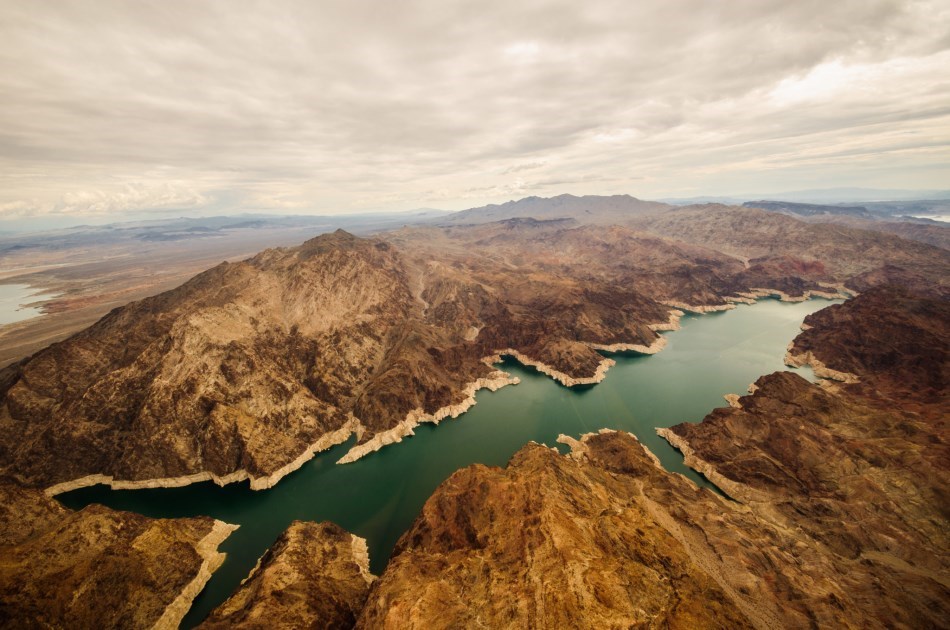At maximum capacity, Lake Mead is 112 miles (180 km) long, 532 feet (162 m) at its greatest depth, has a surface elevation of 1,221.4 feet (372.3 m) above sea level and 247 square miles (640 km2) of surface area, and contains 26.12 million acre feet (3.222×1013 L) of water.
.jpg)
The lake has remained below full capacity since 1983 due to drought and increased water demand. As of April 2020, Lake Mead held 42.97% of full capacity with 11.3 million acre feet (1.39×1013 L), up from 10.4 million acre feet (1.28×1013 L) in 2019 and the low of 9.8 million acre feet (1.21×1013 L) 2016. It has been smaller than Lake Powell (the second largest US reservoir when both are full) since 2013.
.jpg)
The lake was named after Elwood Mead, who was the commissioner of the U.S. Bureau of Reclamation from 1924 to 1936, during the planning and construction of the Boulder Canyon Project that created the dam and lake. Lake Mead was established as the Boulder Dam Recreation Area in 1936 administrated by the National Park Service. The name was changed to the Lake Mead National Recreation Area in 1947, and Lake Mohave and the Shivwits Plateau were later added to its jurisdiction. Both lakes and the surrounding area offer year-round recreation options.
.jpg)
.jpg)
The accumulated water from Hoover Dam forced the evacuation of several communities, most notably St. Thomas, Nevada, whose last resident left the town in 1938. The ruins of St. Thomas are sometimes visible when the water level in Lake Mead drops below normal. Lake Mead also covered the sites of the Colorado River landings of Callville and Rioville, Nevada, and the river crossing of Bonelli's Ferry, between Arizona and Nevada.
.jpg)
At lower water levels, a high-water mark or "bathtub ring" is visible in photos that show the shoreline of Lake Mead. The bathtub ring is white because of the leaching of minerals on previously submerged surfaces.
According to wikipedia





![[HONORARY PROFESSOR OF RECORD FOR PRACTICE AND EMPIRICAL RESULTS – 2024] RECORD HOLDER CHU BAO QUE (BAC GIANG PROVINCE, VIETNAM)](https://uskings.us/wp-content/uploads/2024/05/IMG_0386-218x150.jpg)


